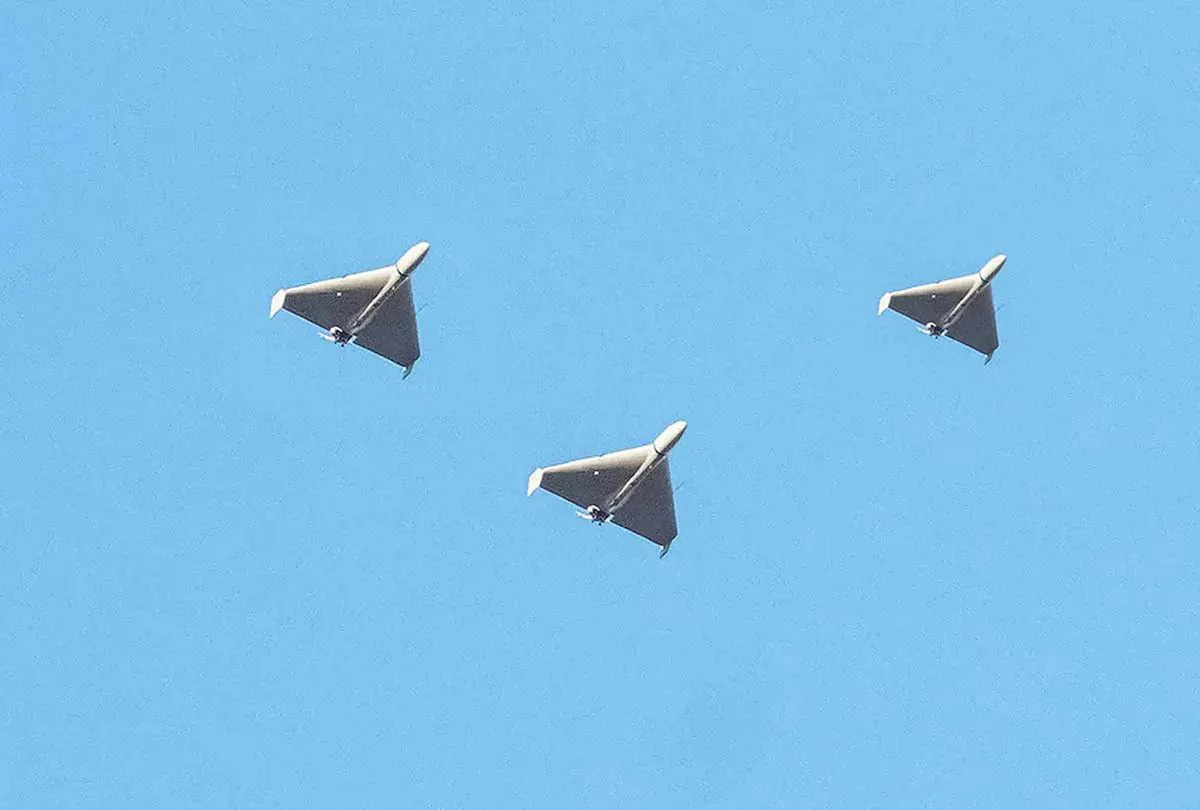Russia’s Shahed Drones Just Got a New Job: Laying Landmines
Russia doubles down on its war crimes
Because turning Iranian lawnmowers into cruise missiles wasn’t bad enough, Moscow is now strapping anti-tank mines under its Shahed-136 drones and dropping them across Ukraine.
A recent video posted by the Russian mil-blogger channel NGP-Razvedka shows a Shahed releasing Soviet-made PTM-3 anti-tank mines from canisters bolted under its fuselage. Each canister pops open with a small charge, ejecting a mine mid-flight. The footage appears to show at least two Ukrainian vehicles falling victim.
This video also does a good job of showing how indiscriminately these things are being deployed:
For the record, this is a war crime. It constitutes an indiscriminate attack under international humanitarian law. Weapons are indiscriminate if they fail to distinguish between legitimate military targets and protected persons, such as civilians.
Think of it as Amazon Prime delivery, but instead of a novelty mug showing up on your doorstep, it’s a shaped charge waiting under your tires.
Shaheds as Flying Sappers
If you’ve ever seen combat engineers at work, you know they’re methodical. They move with mine detectors, probes, and sometimes bulldozers, sweating in the dirt to lay or clear minefields the old-fashioned way.
Russia, in its usual “quantity over quality” approach, decided to skip the sappers entirely and outsource the job to Iranian Shaheds. Why risk a trained engineer when you can tape a landmine to a Shahed and call it innovation?
The tactic does have one twisted appeal: unpredictability. Unlike traditional minefields, which usually sit along chokepoints or defensive belts, a Shahed can sprinkle PTM-3s wherever its handlers get creative: supply roads, farm tracks, even places Ukrainian logistics officers thought were safe.
It doesn’t matter if you’re hauling ammunition or just a truckload of cabbages; if a Shahed has been through, every pothole could suddenly be an ambush.
And there’s a psychological effect here, too. Armies don’t just fight battles with steel and explosives, they fight with nerves. Once word spreads that Shaheds can scatter mines a hundred miles behind the front, Ukrainian drivers will be second-guessing every dirt road, every shortcut, every “safe” resupply run.
Logistics isn’t glamorous, but it’s the bloodstream of an army. Add paranoia to the mix and suddenly every convoy takes longer, every route needs scouting, and the war effort gets just a little more brittle.
It’s also cheap. A PTM-3 costs far less than a Javelin or an artillery shell, and Russia has warehouses of them collecting dust from the Cold War. If even a fraction of those mines can be air-dropped by Shaheds, Moscow gets a poor man’s interdiction campaign without ever risking its dwindling artillery tubes or tank units. That’s not battlefield genius, but it’s cynical efficiency, exactly the sort of thing the Kremlin loves.
The Mine in Question
Keep reading with a 7-day free trial
Subscribe to Eyes Only with Wes O'Donnell to keep reading this post and get 7 days of free access to the full post archives.



